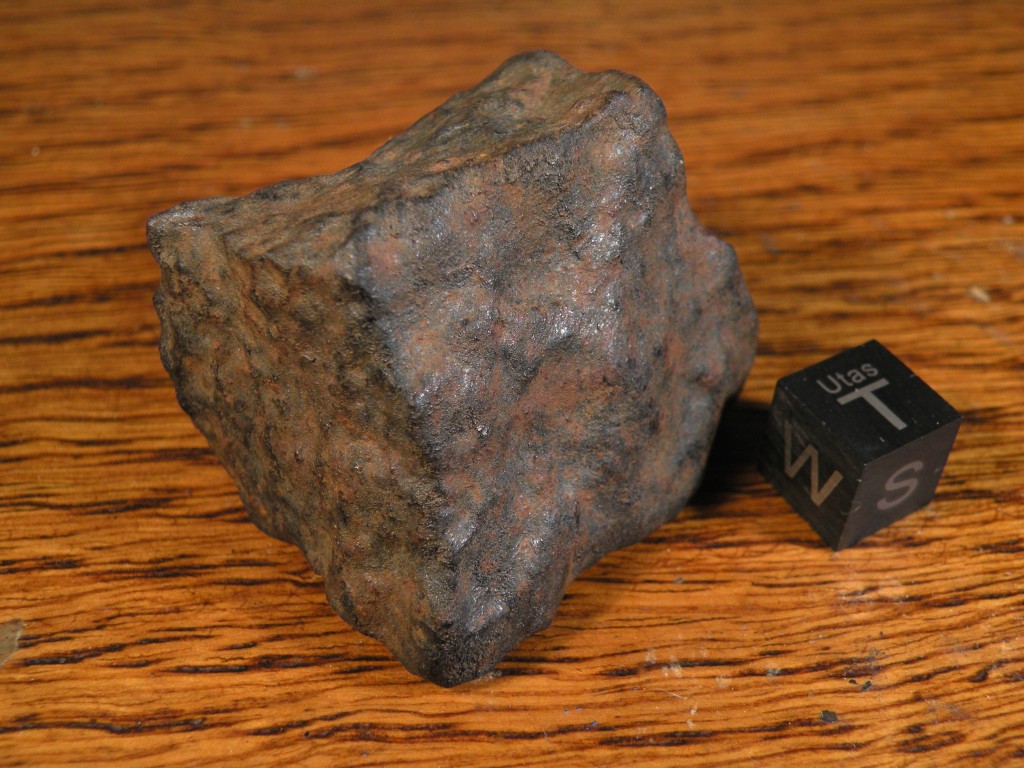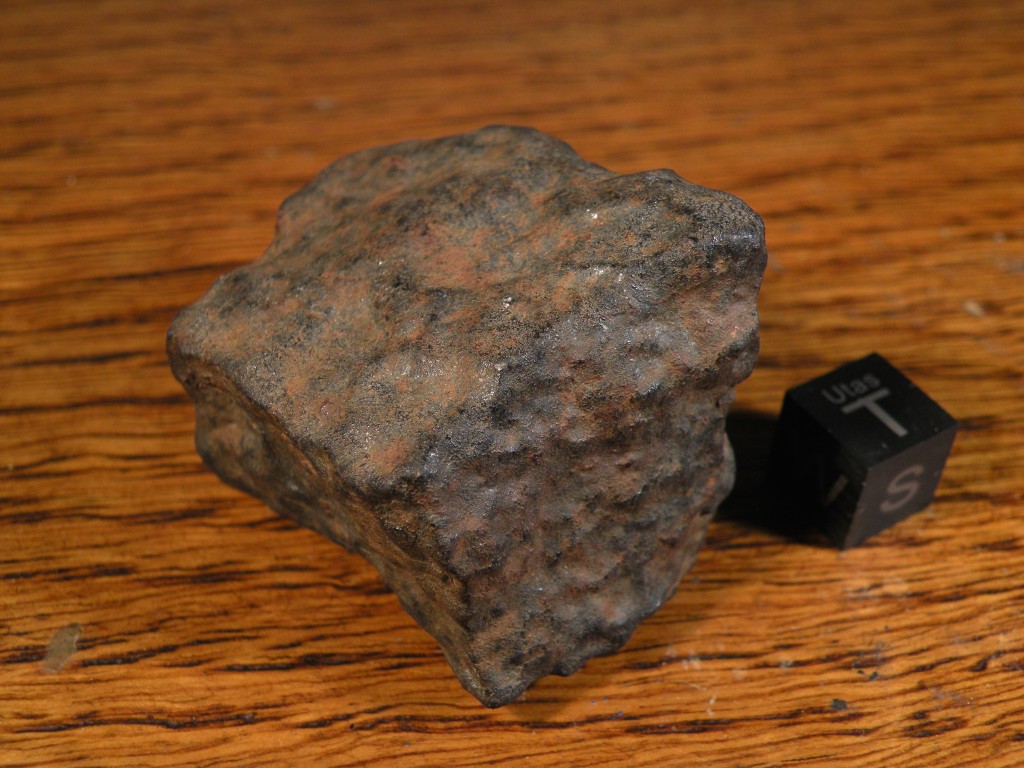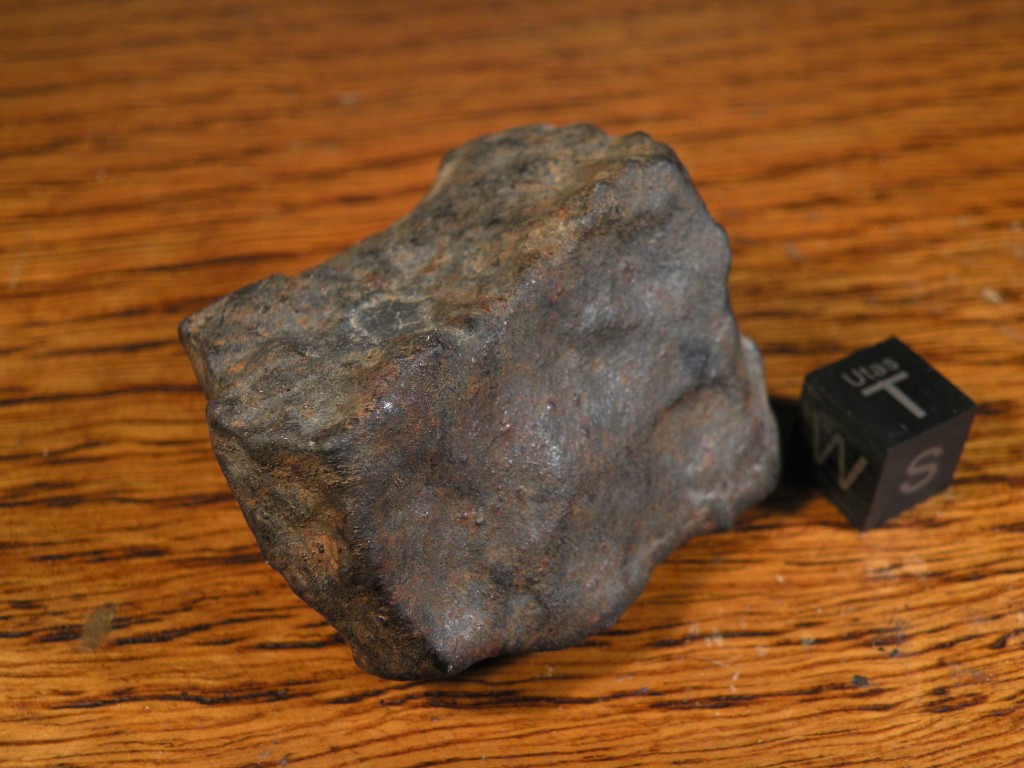Palca de Aparzo, L5
Oscar Turone visited the location and documented this 1988 fall — per the Meteoritical Bulletin:
 This 1995 Meteoryt! Magazine article describes the fall in detail:
This 1995 Meteoryt! Magazine article describes the fall in detail:
——————–
The Palca de Aparzo Meteorite
by Oscar Alfredo Turone, translated by Jason Utas
On Wednesday, September 14, 1988, at about 6:50 am local time, a number of people saw a strange object coming from the west and crossing the sky over Quebrada de Humahuaca in the Argentine province of Jujuy leaving behind it a trail of smoke. After a moment, terrified witnesses heard the sound of an explosion and saw the object break into pieces, then fall to the ground in flames.
“Suddenly I heard a powerful explosion and felt the ground tremble,” said a gas station employee in Humahuaca. He described a well-characterized phenomenon.
The police notified the Air Force Commander of the province by telephone , and was asked to patrol the areas East and West of Palca de Aparzo, but nothing special was noted. Was it a UFO? Maybe plane traffickers? Maybe a satellite? There were different theories, until finally the mystery was finally explained: a falling meteorite.
The Search Begins
As soon as our company (Hatum Pampa Association of Buenos Aires) found out about the incident, we made a list of practical instructions for all of the boards of the cities in the area where the meteorite probably fell. We obtained additional information from witnesses and made contact with police in the provinces, and with the newspaper Pregon.
The police, under the leadership of Roberto Cruz, searched the hills around Santa Ana, Palca de Aparzo, Cholcan, Aparzo y Laguna de Leandro, located 60 km from Humahuaca. Cerro Santa Ana policemen climbed the mountains 4000 m above sea level, facing strong gusts of wind and temperatures low enough to freeze the river, but found nothing. At the same time, the search was being undertaken outside Zenta Mountains in the province of Salta. There, police arrived searched to elevations of 5000 m, to no avail. After so much fruitless effort, the affair was considered closed.
The search continues
Of course, the case was closed for both police headquarters provinces, but not for us. We continued study and analyze the valuable testimony of local people, as Juan Cuevas of Palca de Aparzo, the postman of Palca de Aparzo, and the police chief in Oran, Marquez.
In March of 1990, several members of our company set out for Jujuy. We weren’t certain that it was the fall location, but we made numerous contacts with the local inhabitants in the mountains. They were shown images and meteorites, both stone and iron, to show them how they differed from the surrounding rocks. After returning, the team still sent the list, but no answer came.
Finally, in early January of 1994, we received a package from Jujuy with a letter containing a brief question: “Oscar, is this what you are looking for?” I am still moved when I recall the moment when the package wrapped in newspaper was opened and appeared with a beautiful meteorite specimen from Palca de Aparzo. Nearly six years after the meteor fell, it plainly declared: “here I am.”
In fact, there were three meteorites; one of these, weighing more than 10 grams was sent to Dr. Brian Mason for examination at the Smithsonian. We sent other specimens later: one was an oriented meteorite weighing 104 grams.
On March 7, 1994, Dr. Mason confirmed our suspicions: “The stone is an olivine-hypersthene chondrite, type L5. Olivine: Fa 25 , Pyroxene: Fs 21. “The Palca de Aparzo meteorite is
a fact. It is the seventh Argentine meteorite known.”
In February of 1995, we decided to organize a new trip to the fall area — an official expedition to find further specimens. According to the eyewitness testimony, there are certainly many specimens left to be found. The expedition will set out in January 1996. We will present its results in a future article.
——————–
Here are some photos of a 77 gram stone. If the information in the bulletin is accurate, it may be the third-largest recovered. Many thanks to Gregor Pacer for making this specimen available.



